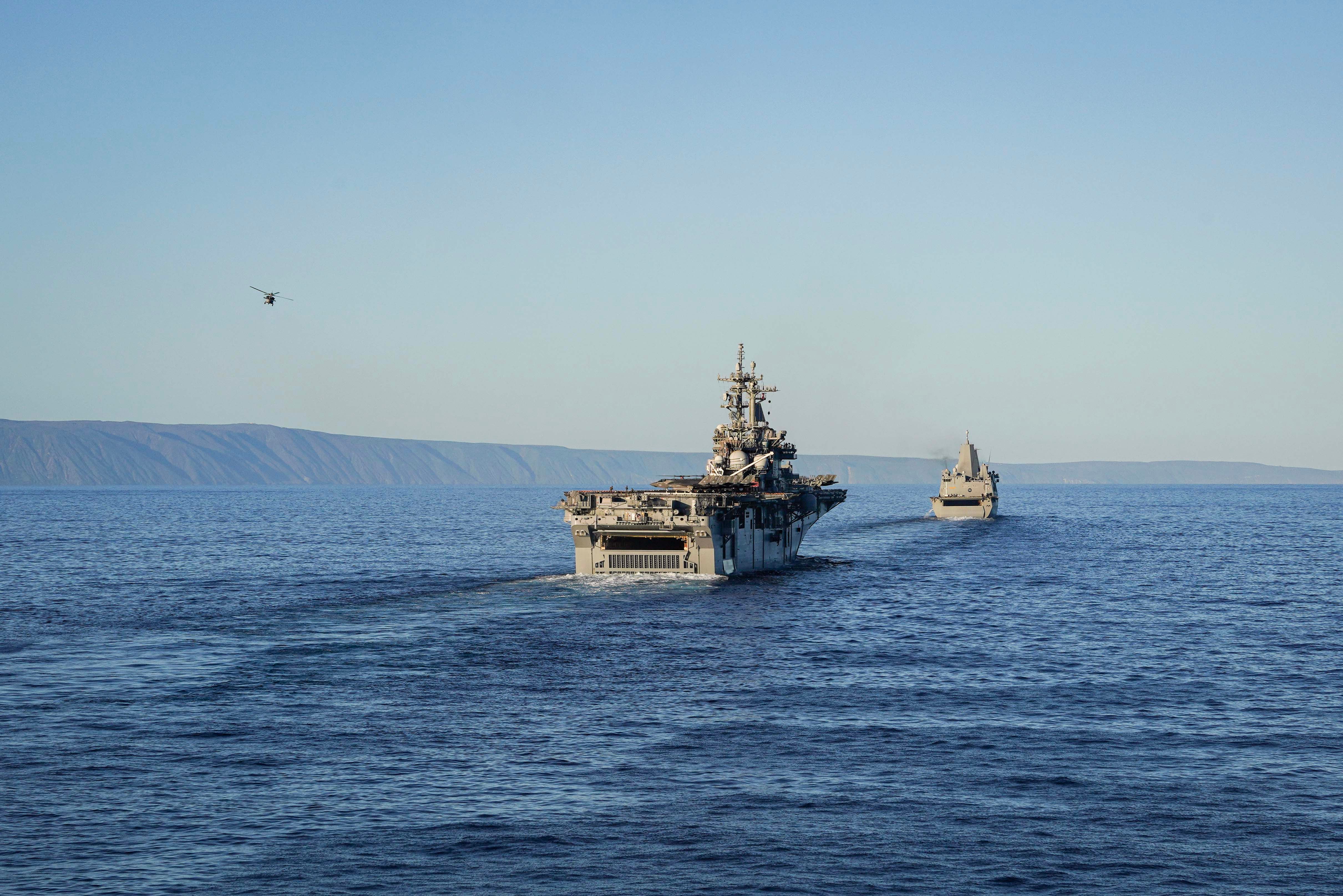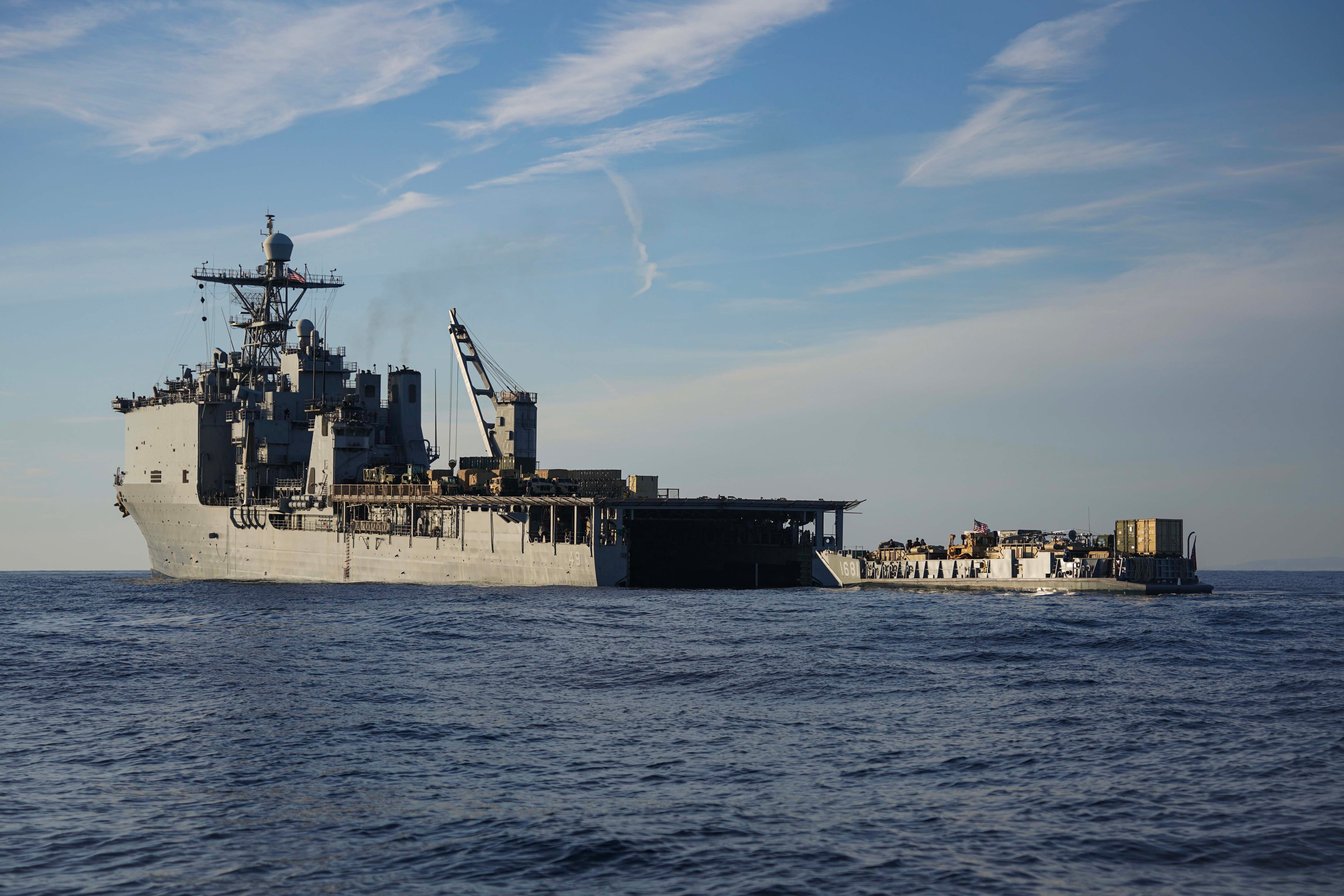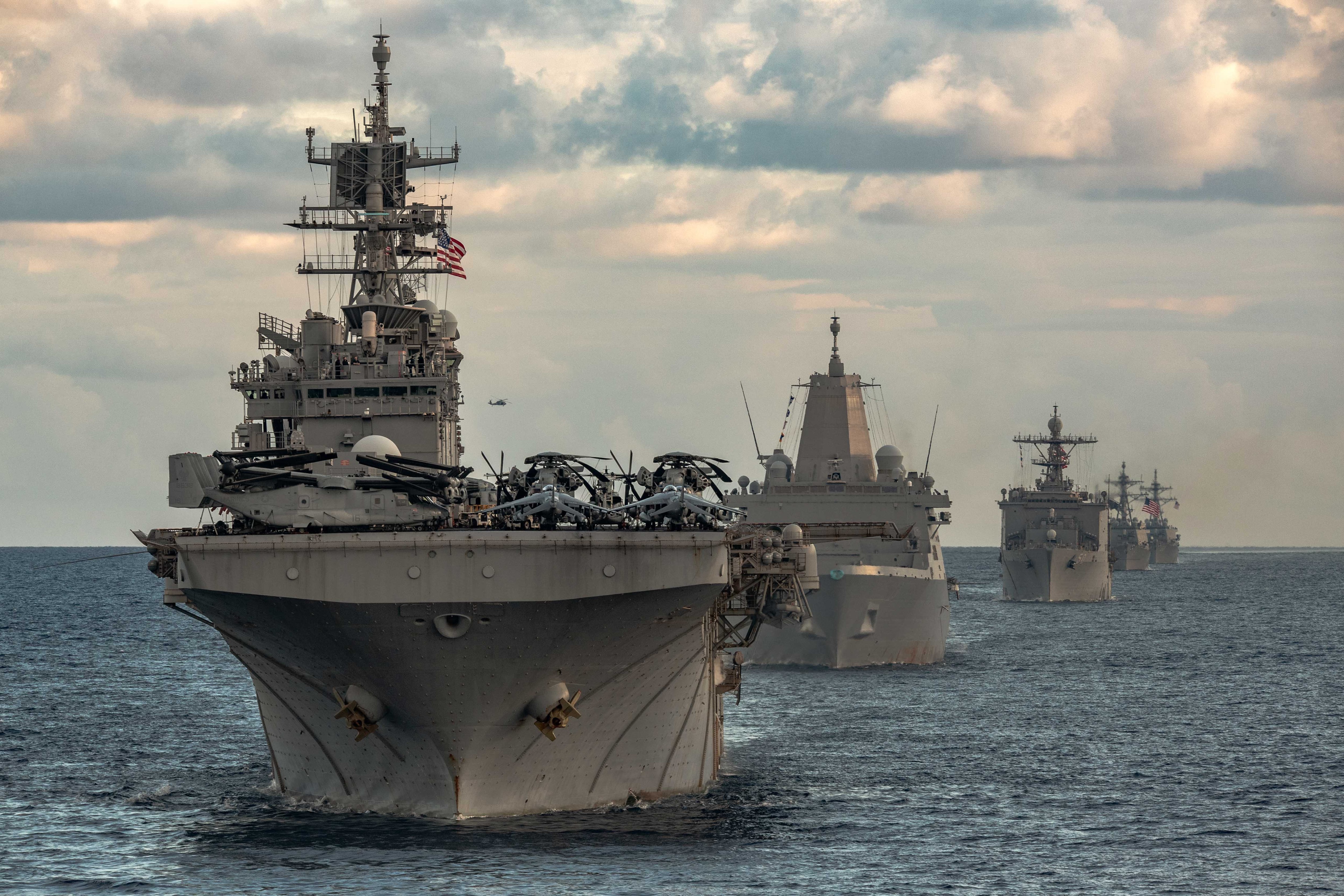WASHINGTON — The U.S. Marine Corps is looking more closely at how to leverage alternate ships to keep its forces at sea, amid an amphibious ship shortage a top Marine called the “single biggest existential threat” to the service.
Lt. Gen. Karsten Heckl, the deputy commandant for combat development and integration, told Defense News the Navy is seeking to improve amphib ship readiness and on-time maintenance. But with the Pentagon weighing whether to pause future amphibious ship production, he said the Marines are more serious than ever about using other kinds of ships, including the expeditionary sea base and the expeditionary fast transport.
He said the expeditionary fast transport, or EPF, has been successfully used by Marines in the Pacific several times recently. It’s not tailor-made for amphibious missions, he noted in the Jan. 12 interview, but “we’re just going to have to make do.”
In the Middle East, Heckl noted, the Bataan Amphibious Ready Group with the 26th Marine Expeditionary Unit remains on station off Israel. But it’s been deployed since July and eventually must come home. When it does, there is no ready ARG on the East Coast to replace it.
“A Marine expeditionary unit, properly armed and trained like 26th MEU is … is a serious power-projection capability for the joint force and the combatant commander. That will not be there,” Heckl said. “Do I have a MEU to put against it? We certainly do. We just don’t have the amphibs.”
As a result, in recent and upcoming deployments, the Marines are going to sea through nontraditional means.

From September through December, the Marines moved the 11th MEU command element from the West Coast into the Pacific. Once there, these Marines had episodic access to EPF Brunswick, which allowed them to conduct naval campaigning missions and exercises with allies and partners throughout the region, including the Philippines, Malaysia and Indonesia, according to Shon Brodie, the director of the Maritime Expeditionary Warfare Division at the Corps’ Capability Development Directorate.
Because these Marines didn’t have the full Marine expeditionary unit capability onboard a full three-ship amphibious ready group, they had to rely on external aviation assets to get to and around the theater. But, Brodie said in a Jan. 19 interview, it allowed the Marine Corps to have a deterrent force at sea ahead of Taiwan’s Jan. 13 election, considered a period of heightened risk with China.
In another example, Brodie said, the Boxer ARG on the West Coast will deploy with the 15th MEU in phases. Due to ship maintenance challenges, all three ships are not ready to deploy as planned; instead, the Somerset will leave in the coming days, with Boxer and Harpers Ferry departing California in the March timeframe. This allows the Marines to have some forces at sea now, even if the full ARG is not ready to go just yet.
Brodie said the Navy and Marines today try to achieve what’s called “2.0 MEU presence,” meaning one ARG/MEU team is always deployed out of Japan, and another is deployed from either the East Coast or the West Coast. The naval team used to sustain a 3.0 MEU presence, where the East and West coast fleets both had a ready ARG/MEU team to supplement the one in Japan.
Brodie said the Marines are seeking to ensure three MEUs are ready for operations at any given time, even if there isn’t an accompanying ARG available.
“We’re working to do the best that we can do to get forces on a sea base; in the absence of that, we’re looking at other ways to have Marines forward for a fleet commander,” he said.

Gen. Christopher Mahoney, the assistant commandant, said Jan. 25 during a Hudson Institute event that having three MEUs at sea on three fully ready ARGs is unlikely today.
“What we will have is MEUs that are trained and ready,” he said. If there’s an urgent need to deploy them, “they may be conveyed by alternate means, they may be conveyed by the air. Not optimal, and not what they were designed to do.”
He added that if pushing Marines forward on alternate platforms becomes more of “a predictable eventuality, we will change the training” to reflect that.
A U.S. Navy spokesperson told Defense News in a statement that the service is focused on fleet readiness.
“We look forward to continuing to work with our industrial partners, the U.S. Marine Corps, as well as Congress, to ensure we continue to maximize readiness and are able to fight and prevail when and wherever called upon,” the statement reads.
Brodie said putting Marines to sea on alternate ships is “feasible” but “not desired” because the expeditionary sea bases and expeditionary fast transports, while spacious, do not have all the aviation support, ammunition storage and other features of an amphibious ship.
Heckl noted the lack of ready amphibs remains “my single biggest point of concern.”
Megan Eckstein is the naval warfare reporter at Defense News. She has covered military news since 2009, with a focus on U.S. Navy and Marine Corps operations, acquisition programs and budgets. She has reported from four geographic fleets and is happiest when she’s filing stories from a ship. Megan is a University of Maryland alumna.




